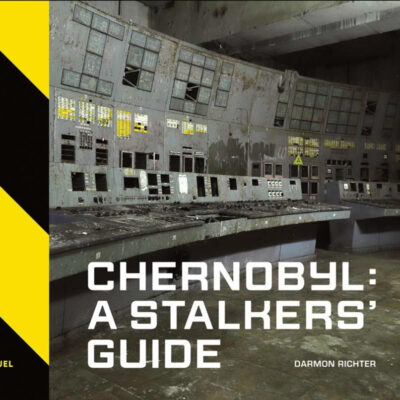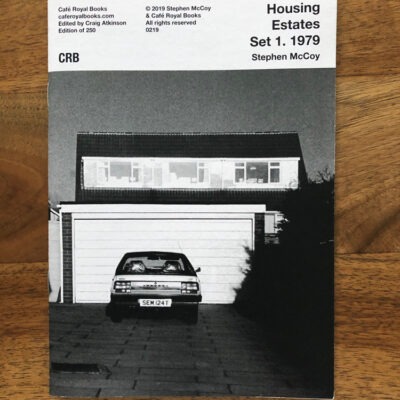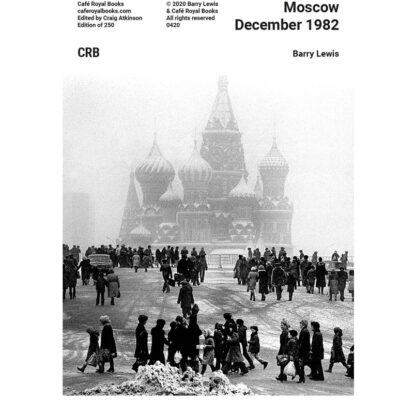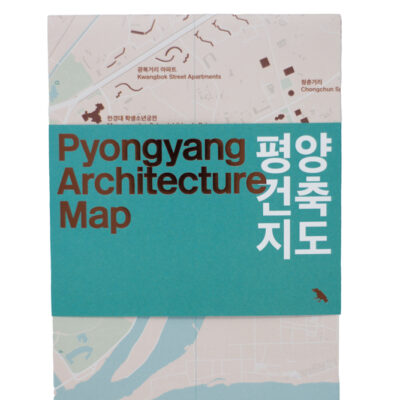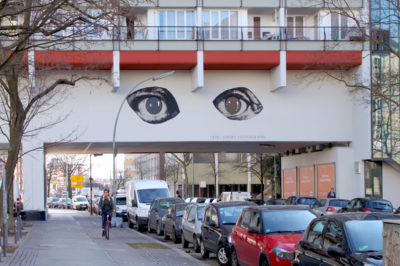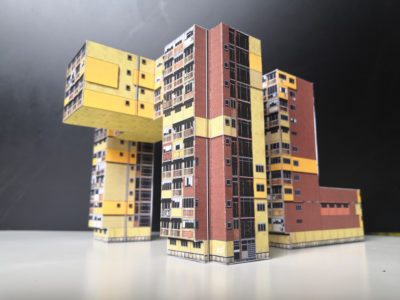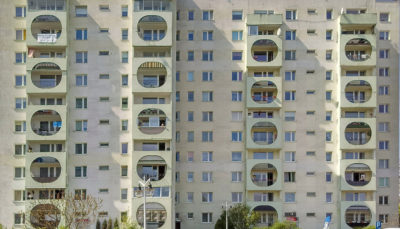Plattenbauten: Behind the Facade
Erik Timmermans creates facades out of cardboard which he cuts through, revealing with each layer he strips back, someone’s story. Inspired by found or photographed images of plattenbauten, he is inviting us to see beyond the first layer into the discrete lives of the residents.
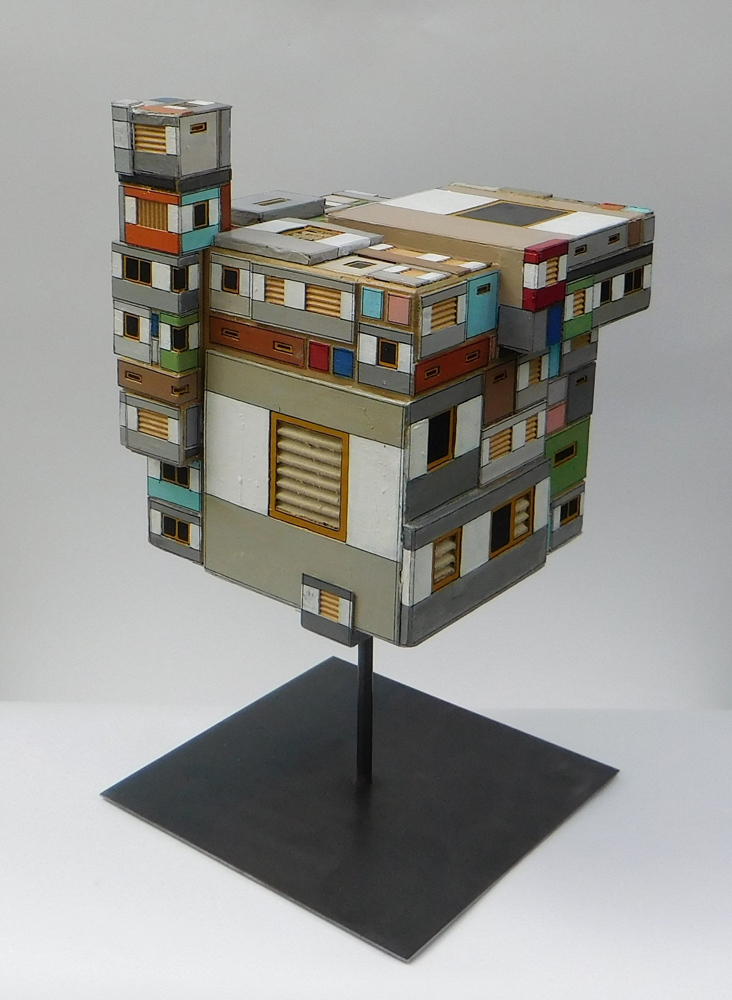
Platte Art XXXII
Anyone watching events unfold in Berlin in November 1989 witnessed the collapse of a house of cards. For Timmermans, then 19, sitting on the sidelines in Amsterdam it fuelled a curiosity to explore an East Germany vanishing before his eyes. His art and text is an expression of encounters during his extensive travels in a fast-changing country as reunification happened.
On August 12th 1961 the fate of millions of Germans was sealed at Döllnsee, the Haus zu den Birken in Schorfheide to the north of Berlin. By now the summer residence of Walter Ulbricht it had formerly been the home of Göering’s huntsman and part of his private residence, Carinhall. Ulbricht, the Leader of the Socialist Unity Party of Germany and Chairman of the National Defence Council of the GDR at what appeared on the surface to be a summer social, signed-off the order to close the borders between the GDR and the Bundesrepublik Deutschland, West Germany.
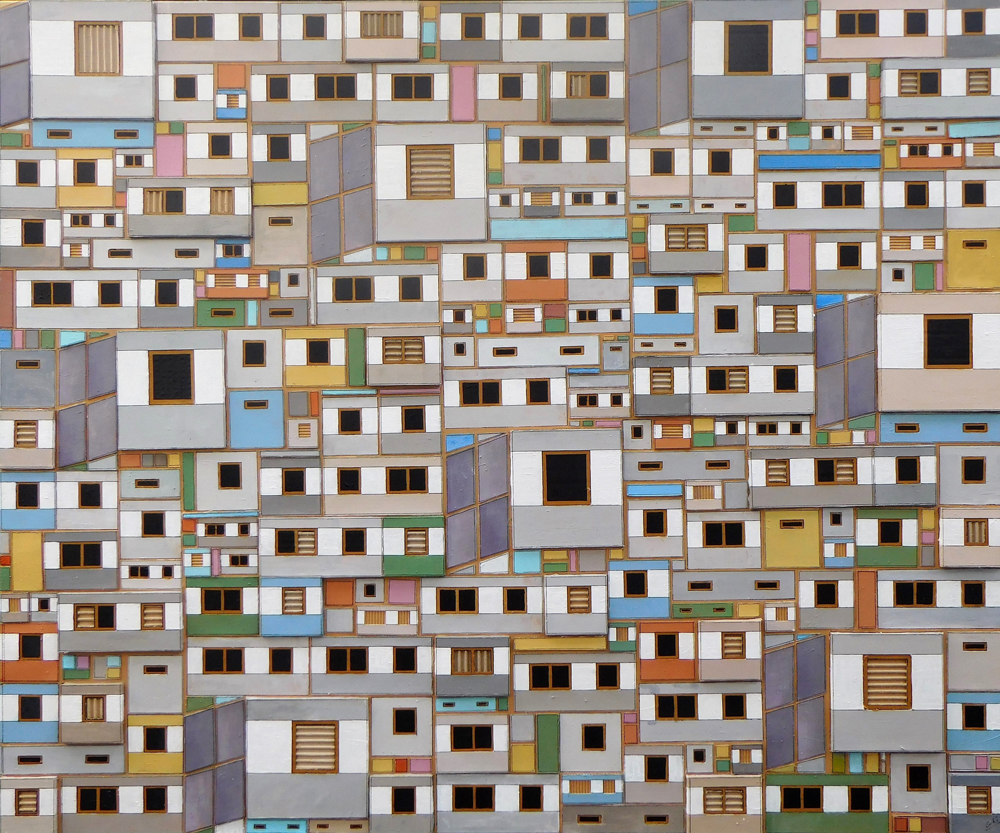
Platte Art XXXIII : 2 d (120×100 cm)
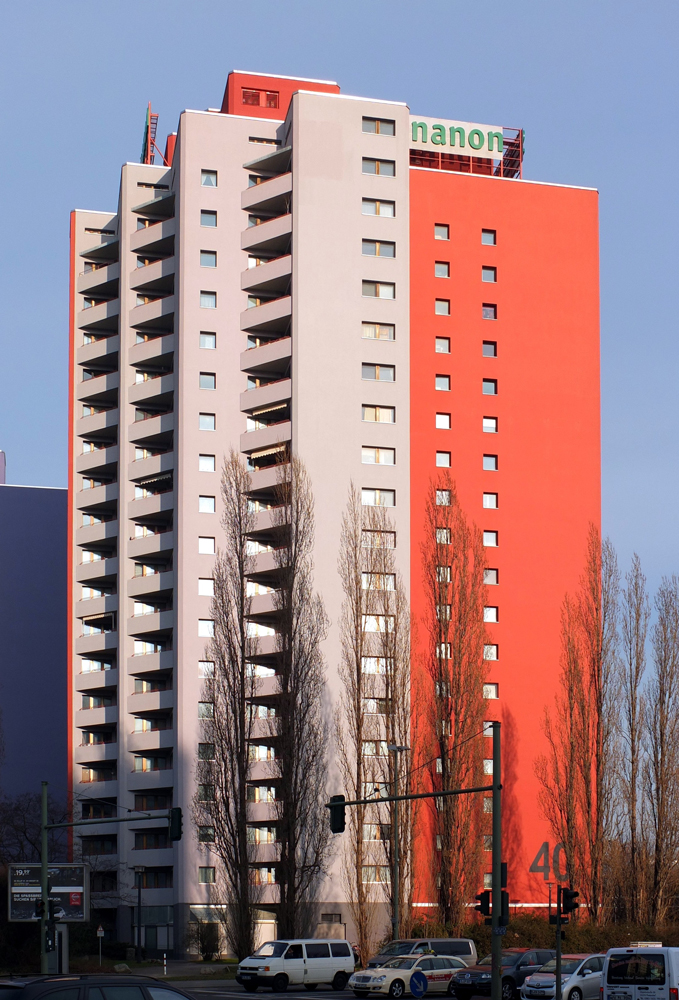
(2) Plattebau type WHH GT 84/85
With great stealth, at midnight, streets were quickly closed off and traffic banned from specific areas – Stacheldrahtsonntag, ‘Barbed Wire Sunday’ was unfolding. Already primed in advance to act, strategically placed tanks and armoured personnel carriers together with thousands of East German soldiers, the Berlin Security Command and the ‘People’s Police’ carried out code name ‘Rose’, the operation to protect a 156-kilometre area which straddled the three western sectors. Concrete posts and barbed wire were dropped into place along the border. West Berlin which sat almost 160 kilometres deep into GDR territory was now lassoed by a 43-kilometre physical border.
By mid-morning Sunday the 13th August 1961, the paving stones on streets had been ripped up to create a barrier, the maurer was in place and East Germany had created the Antifascistischer Schutzwallwall. A few days later the area was unrecognisable huge concrete blocks had been set in place all protected by a line of soldiers with a shoot-to-stop order.
Erik Timmermans post-1989 travels took him deep into Germany and he translated what he saw and heard into ‘Platte Art’. He was particularly struck by Plattenbau prefabricated housing which is the combination of the words platte meaning slab and bau .. building. Out of this, he created Platte/WBS 70 (named for the GDR’s most common building type – Wohnungsbauserie 70 with its distinctive facade panels).
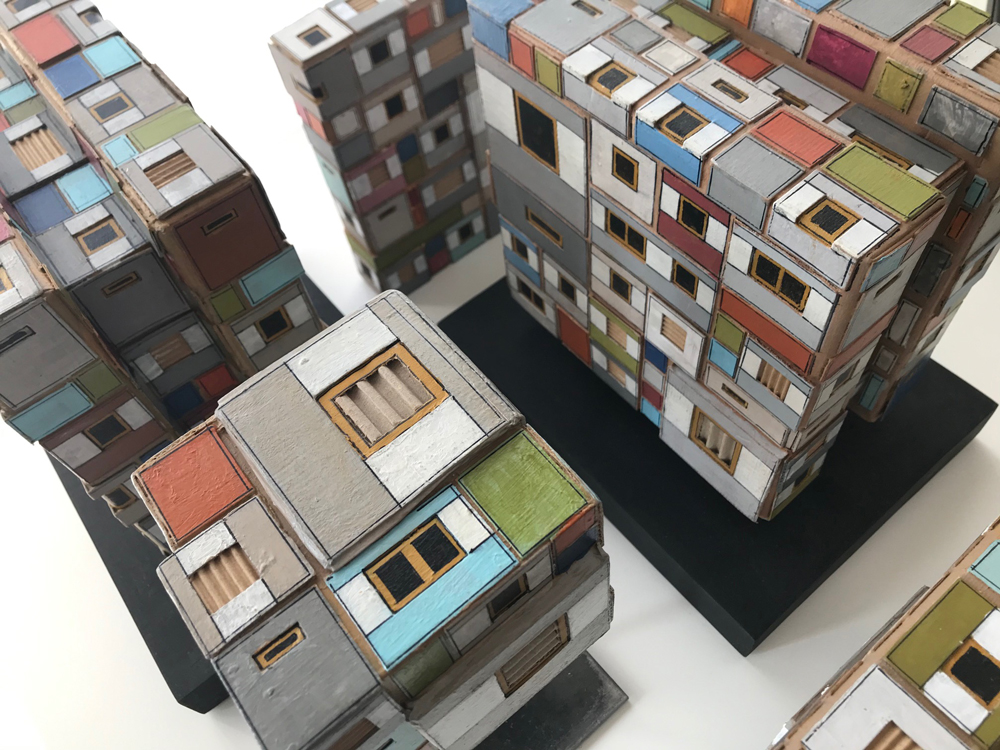
The programme to upgrade East German housing was spearheaded by Erich Honecker, General Secretary of the Socialist Unity Party of Germany from 1970 until the collapse of the GDR. A loyal servant of the state whose belief in the system was unwavering to the end, he was the man responsible for the building of the mauer and the last man standing between the Berlin Wall and peoples’ right to freedom of thought and movement. Timmermans explains, ‘Honecker wanted to create cheap, uniform, comfortable housing. Millions of homes were built, which regardless of their monotone grey appearance were loved. Complete areas were dominated by Plattenbauten such as Berlin’s Marzahn-Hellersdorf … In addition to the obvious practicality of this type of housing, the Platte had an ideological aspect’.
“settle the housing problem as an issue of social relevance”.
Erich Hoenecker
Factoid: By 1990 more than 3 million Ost German’s were living in plattenbauten
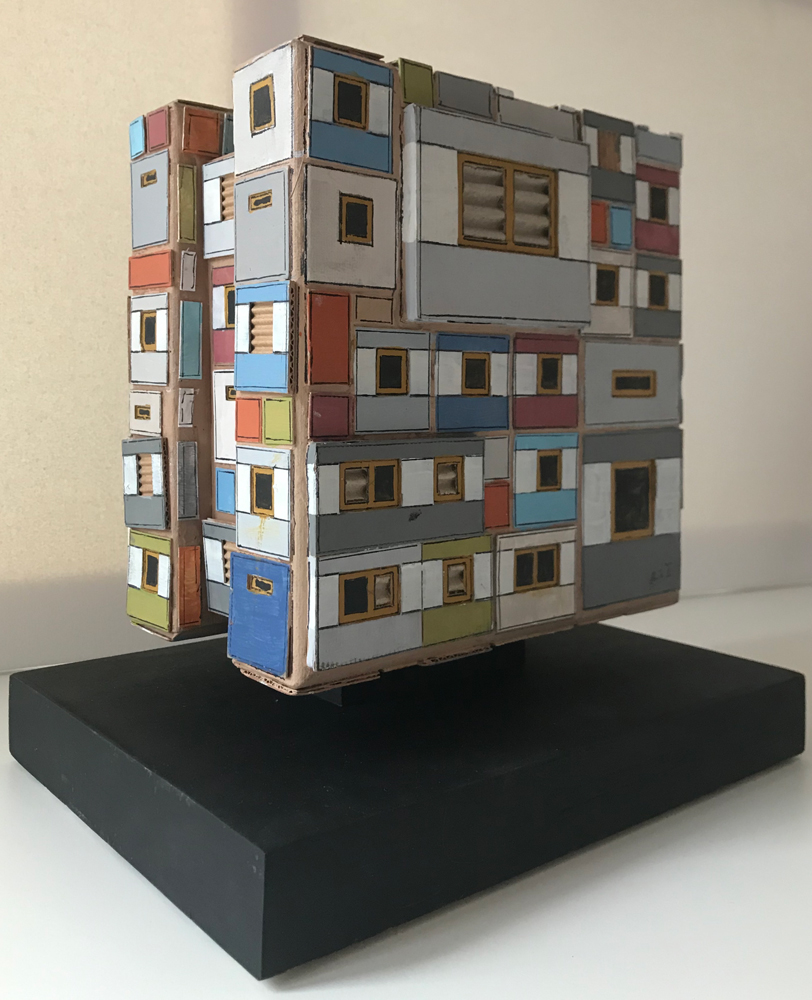
The Platte Art series allows Erik to express his curiosity about what lay beyond the political and historic dimension of Honecker’s architectural project to reveal, as Timmermans puts it, ‘the social contract between the citizens and the dictatorship’. He uses a variety of mediums, ranging from his book written with Jaap Visser, ‘Berlin – a guide for the Capital of the GDR’ which was published in Holland in 2019, through to interviews and of course, his art. Canvas, corrugated and folding cardboard with acrylic paint are employed to reach out to the viewer. ‘I don’t paint or create buildings, I am inspired by them and use their form language’.
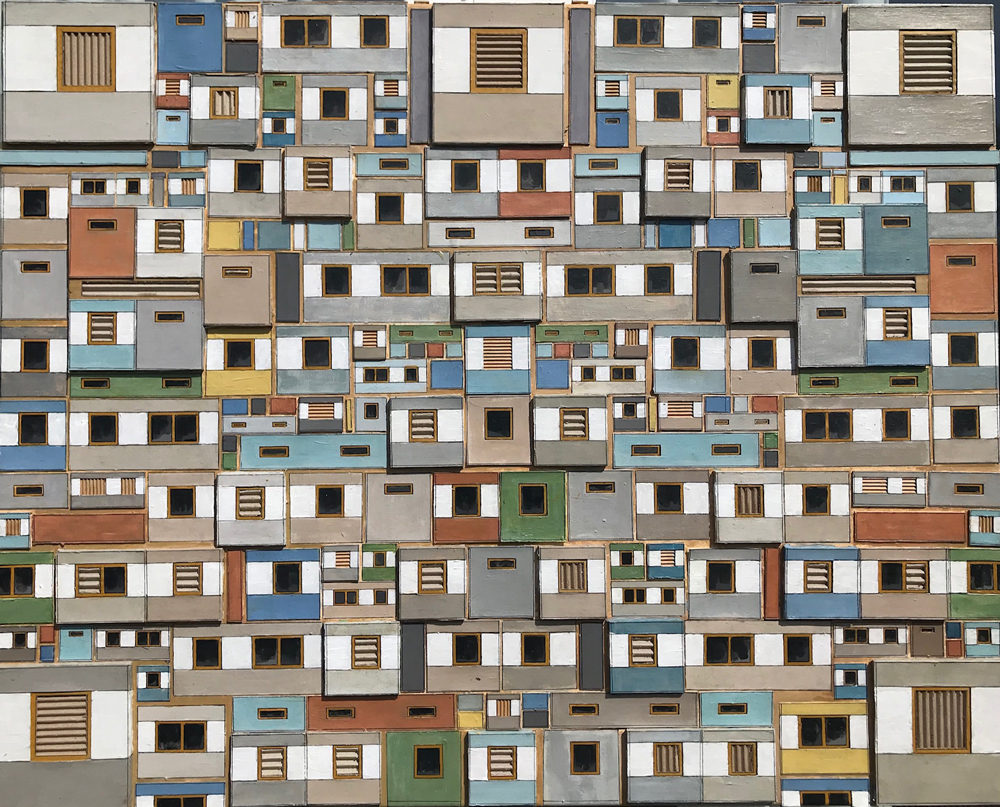
Platte Art XXVI : 2 d
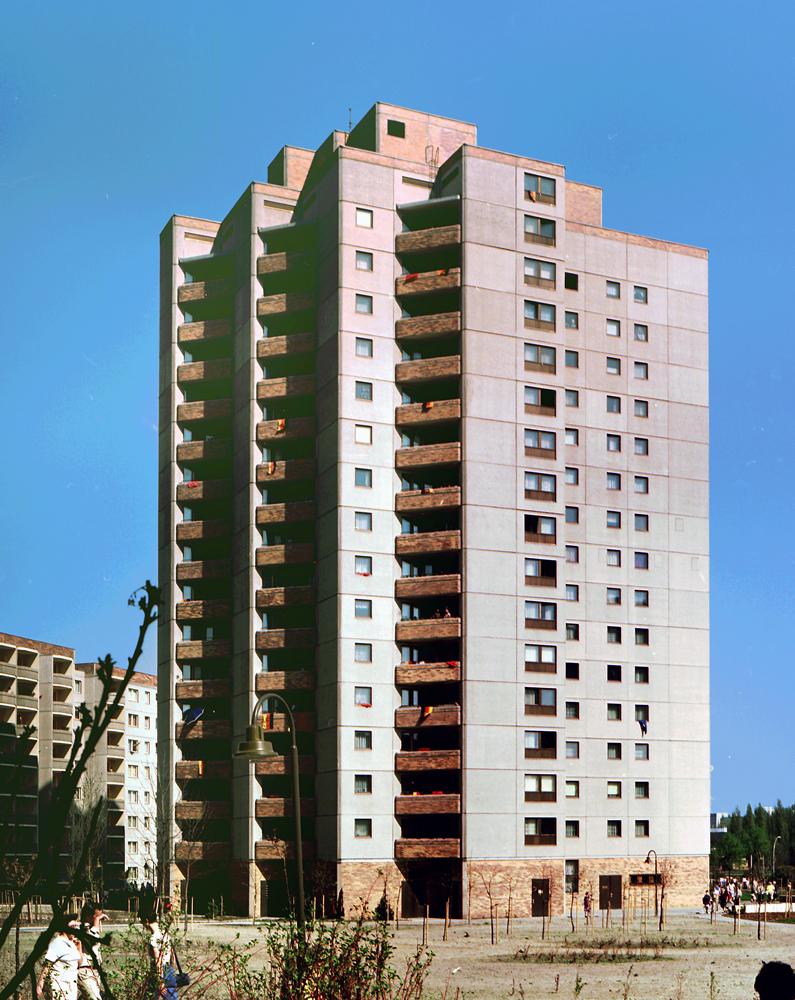
(1)Berlin Prenzlauer Berg Ernst Thälmann Park
His interviews reveal the hopes and fears of the residents of the plattenbauten
Take for example Andrea Beu, a former cabin attendant with Interflug, the national airline of the GDR. Regardless that the outside world saw the communist regime as a pure dictatorship, for the citizens their lived experience could be different. Erik shares, ‘Andrea had a wonderful youth with her parents living in typical socialist housing. She recalled simply not being aware of the interference of the state until she reached adulthood. Only later did she recognise the problems. Her dream was to travel, which was almost impossible for citizens of the GDR.
“I never felt a lack of liberty in the GDR, but I wanted to experience and see more then Rügen, Budapest and the Black Sea”.
Andrea wanted to visit Paris, London…forbidden destinations for someone lacking sufficient influence to be able to officially visit the West. And so, she became a cabin attendant. However, she was not a party member which meant she was only allowed to fly in and out of Soviet block destinations. She had to wait for the fall of the wall to visit Paris. She was not critical of every aspect of life in the GDR and still misses parts of it and is troubled that in the new Germany there is a lack of respect for citizens of the former GDR.
“The association with West Germany also has a painful aspect. Familiar GDR products have disappeared from the shelves of stores. Everything I liked as a child is gone. Not everyone has experienced the fall of the Wall as a liberation; the changed reality gave a large group of people a real sense of uncertainty. Unification paid too little attention to the sense of identity of many people. They were raised as citizens of the GDR. That past and that land was suddenly contaminated and disappeared. The unification is progressing and in my opinion is too strongly dictated by the economy. Many people have become disappointed whereas I saw opportunities and do enjoy my current life and freedom”.
Erik notes, creating his art always evokes mixed emotions, it’s like ‘walking on eggs’ to portray it in too upbeat a way does not respect the fact that for most ‘the GDR was an oppressive state, a dictatorship. Not a state like Nazi-Germany, but fundamental rights were only recognized on paper and trampled underfoot’.
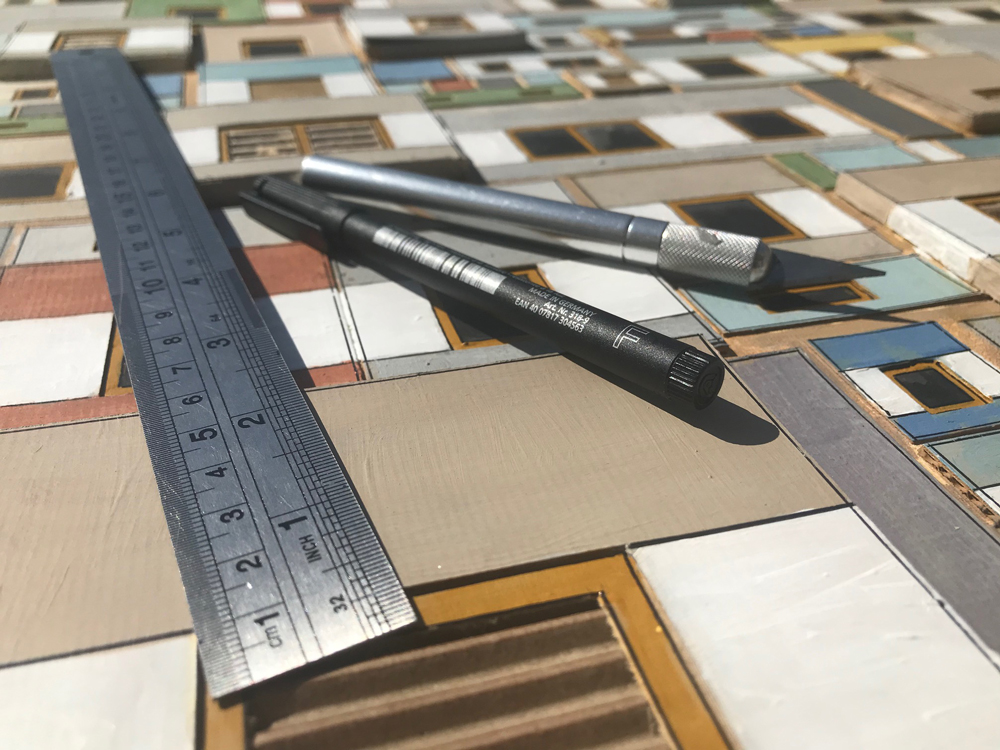
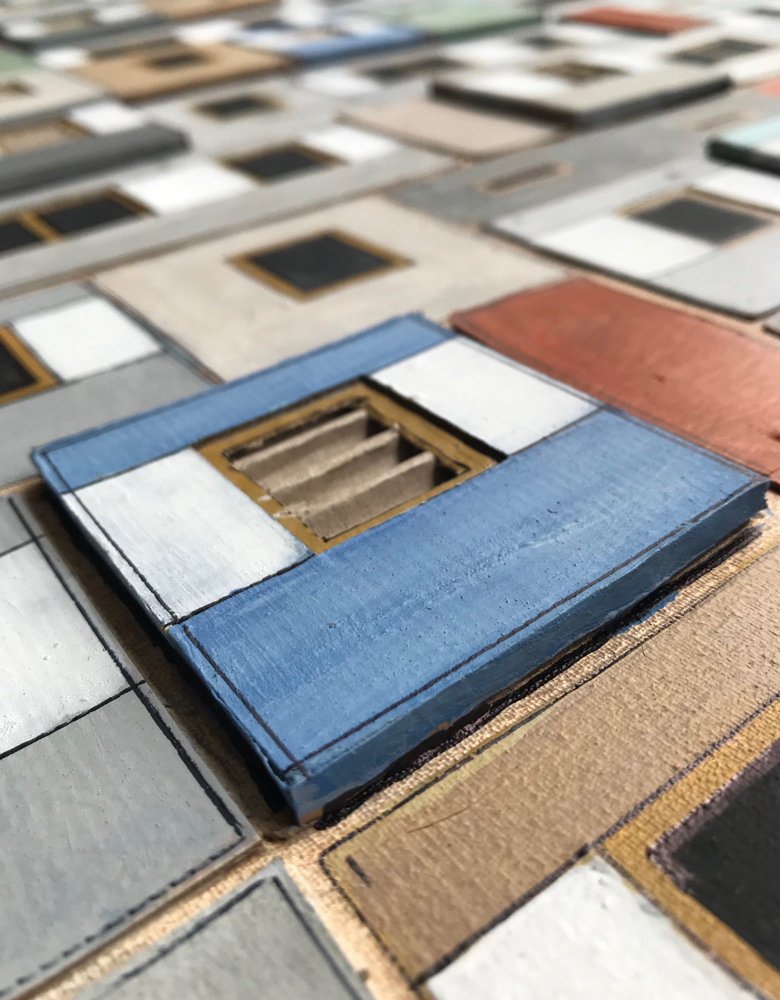
Harmut Richter exemplifies this, another of Erik’s interviewees, ‘a man who helped 33 people flee the GDR to get to West Germany. The last flight, his sister and brother-in-law were hidden in the back of his car….they were caught. Hartmut was in prison for eight years, four years in isolation. He was freed when he was ‘bought’ by the West German government’.
Factoid: East Germany’s trade in human beings
‘Hartmut was unable to say anything positive about the GDR. He had suffered greatly at the hands of the dictatorship. Today he is a guide in a former Stasi-prison and recalls his experiences to young visitors. He can find it difficult when he encounters visiting tourists walking around dressed in T-shirts with GDR-logos or communist images. He explained to Erik,
“I talk to them and ask if they know what kind of suffering has been caused in the name of that ideology. It’s not funny or tough to take to the streets with that”.
‘The impact on my art is constantly finding a balance and nuance in both composition and colours’ Erik explains, ‘neither too cheerful nor too monotone, but also restrained, suitable, modest….I hope to bring attention to the individual stories and to make clear that the monotone facades are not an explanation of everything. These stories – behind the facades forms are the inspiration for Platte Art.
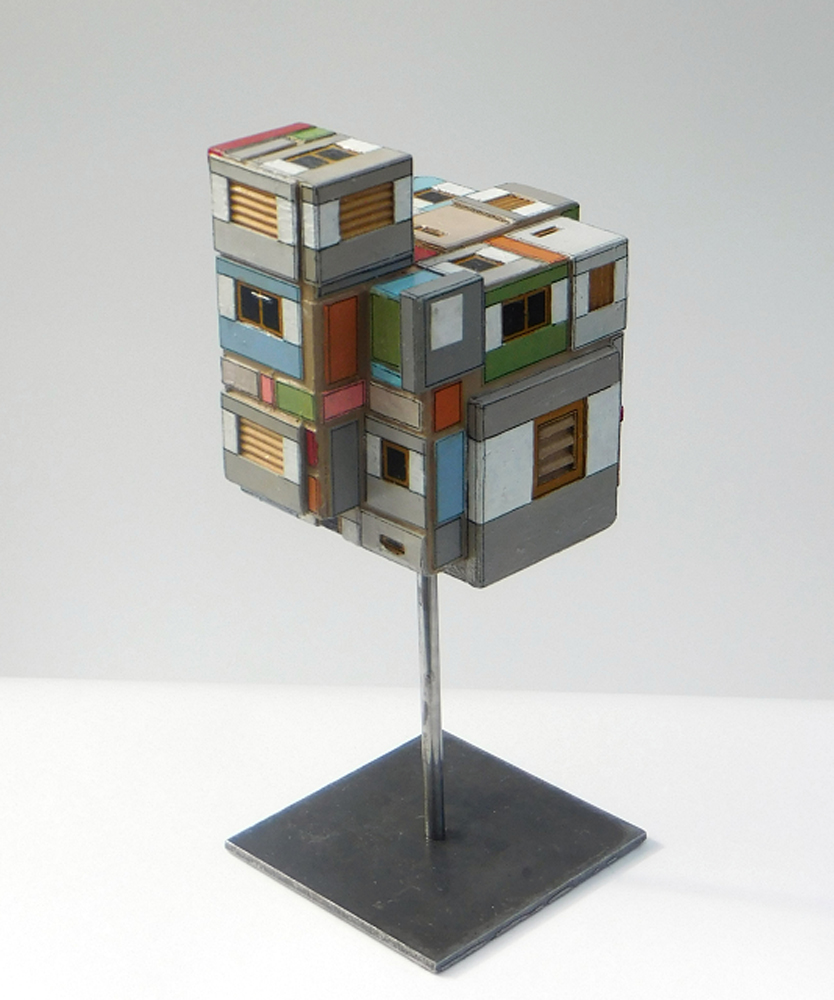
Platte Art XXXV: 3d (10x10x10 cm)
Discovering more about Erik’s work
Up and coming exhibitions
Website: eriktimmermans.com
Instagram https://www.instagram.com/erik.timmermans.art/
All images and artwork are the Copyright of Erik Timmermans unless otherwise stated ©
(1) Image Dr Jörg Blobelt CC BY-SA 4.0
(2) Image Axel Mauruszat CC BY SA 3.0




